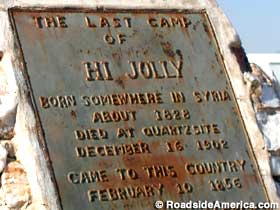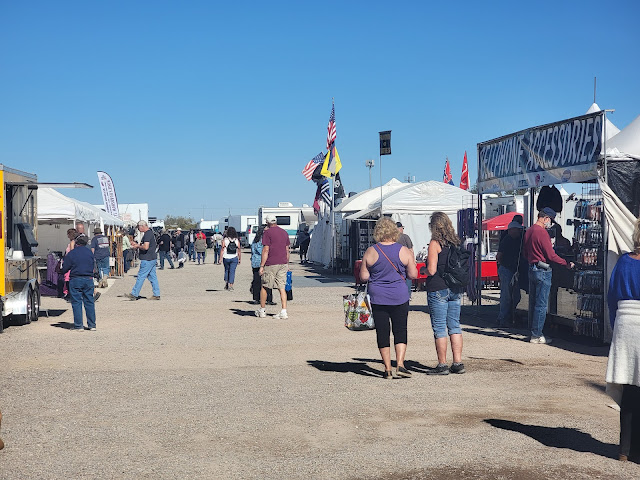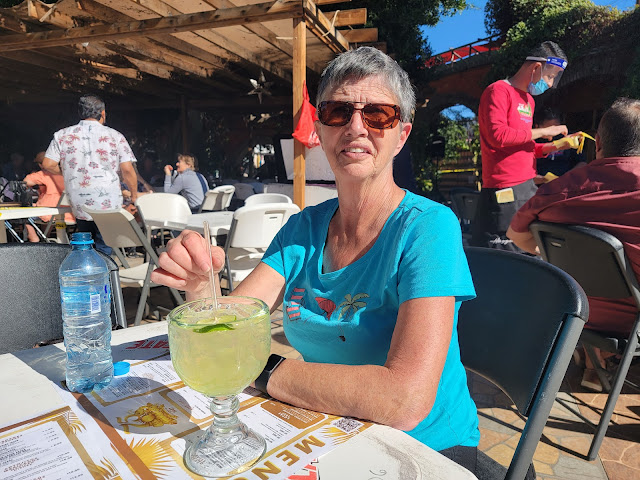Why the camel on the Quartzite sign as you enter town?
Hi Jolly's Tomb
Quartzsite, Arizona
In 1856, Secretary of War Jefferson Davis (later President of the Confederacy) had a novel idea: transporting freight and people across the desert Southwest on camels. He eventually imported over 70 of the beasts. Along with the first batch came a Syrian caretaker, Hadji Ali. His American masters called him Hi Jolly.
A plaque on Hi Jolly's tomb says of the camel experiment: "A fair trial might have resulted in complete success." But the Civil War intervened, Jefferson Davis changed jobs, and without his support the project was abandoned. The camels were set free to fend for themselves in the desert near Quartzsite.

Hi Jolly remained, living into his seventies. The locals were so fond of him that, after he died, they spent several weeks building Hi Jolly a special pyramid tomb, made of multicolored petrified wood and quartz. It was dedicated on Jan. 4, 1903. Thirty-three years later the Arizona Highway Department came along and cemented a bronze plaque to the tomb, telling Hi Jolly's story, and topped the pyramid with a metal camel silhouette.
In those long-ago days the Quartzsite cemetery was remote, just bare ground and a few scrubby sagebrush at the edge of an obscure desert outpost. Now you have to drive through the very busy Quartzsite flea market to get to Hi Jolly. Still, his tomb is the biggest thing back in its tiny patch of desert solitude.
The camels, by the way, outlived Jefferson Davis, Hi Jolly, and even the cementing of the plaque. Their last reported sighting was in 1942.
More on Hi Jolly and the camel corps: Neil Morrison, director of the 11th Armored Calvary Museum at Fort Irwin, California, said that Hi Jolly had two wives simultaneously, and that there was a second middle-eastern camel trainer as well, "Greek George" (There were originally ten, but the other eight quit when the Army refused to pay them up-front). Greek George eventually settled in southern California. One day he innocently helped a Mexican bandit who had been injured in a fight, was later tried and found guilty of aiding a criminal (even though he spoke no English or Spanish), and was hanged -- so no monument for George.
 |
| The monument in the grave yard built for Hi Jolly |
 |
| The plaque at the entrance to the cemetery |
We have moved back to Yuma for a few days to hang out with out friends before we depart for Mexico.
Last night we had a nice bonfire and our neighbours, Josee and Judes from Ascot Corners QC, David and Cynthia from Lynhurst On, Ron and Eady from Kamloops, and Lois, from Cincinati Ohio. Great Evening.


















































